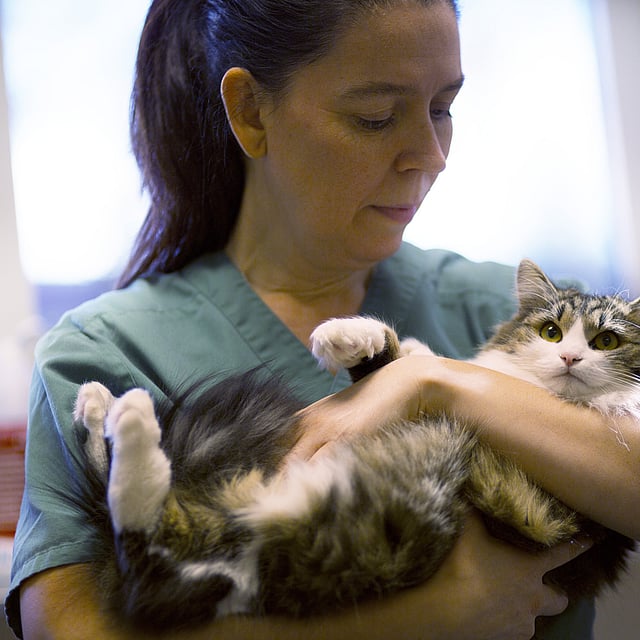When does an animal need a blood transfusion? #
Blood loss
If a dog has suffered shock due to major blood loss, a blood transfusion is part of the treatment. It lacks red blood cells (erythrocytes), which are responsible for transporting oxygen in the blood. In addition, the transfusion increases the blood volume again, which is necessary for constant blood pressure. Other substances, such as molecules for blood clotting, are also topped up by a blood transfusion.
Chronic kidney failure
A blood transfusion can also be necessary, e.g., in chronic kidney failure, as this results in deficient production of red blood cells. If the body’s own blood clotting is disabled by rat poison, a blood transfusion can be life-saving.
Preoperative provision
By the way: if an operation is planned that is known to be associated with high blood loss, blood can be taken from the animal a few weeks beforehand. During the operation it can then be transfused with its own blood. Also, when major bleeding is present, e.g., into the abdomen, the blood can be taken from there and returned directly to the blood circulation. This is an emergency measure, e.g., after an accident with severe internal bleeding.
Blood transfusion and blood groups #
Dogs have different blood groups too, which – just like in humans – are not all compatible with one another. There are rapid tests for determining the blood group. If the wrong blood groups are combined, there can be severe and sometimes fatal reactions because the recipient’s immune system reacts to the foreign blood. Fortunately, this is rather rare in dogs; most blood groups harmonise sufficiently with one another. By contrast, determining the blood group and choosing an appropriate donor animal are more important in cats.
By the way: in an emergency a cat can also be given dog blood as a once-off. Compared with red blood cells of the same animal species, which survive up to 30 days, survival is only about 4 days with such transfusions. However, this can be life-saving in an individual case, until enough matching cat blood is available.
Blood donation and transfusion #
The donor animal should as far as possible never have received a transfusion and should also have its health status clarified. Otherwise, diseases such as leishmaniasis or borreliosis can be transmitted to the recipient. Donor blood can be stored or transferred directly; the latter is more often the case. Besides what is known as whole blood, individual blood components can also be given as needed. An infusion is set up in the recipient animal for this purpose, through which the blood can be given slowly into the vein.
Large veterinary practices and hospitals now have their own blood banks so that they can give a blood transfusion with matching blood quickly in an emergency.
More about blood donation in animals.
Risks of blood transfusion in an animal #
The recipient’s immune system can overreact to a blood transfusion, with the occurrence of allergic reactions including anaphylactic shock (allergic shock). Destruction of the erythrocytes is also possible. This also comes about through the recipient’s immune system and can be largely avoided by prior blood group determination. The donated blood should not contain either transmissible diseases or impurities that can arise due to incorrect storage or incorrect use.
© AniCura
